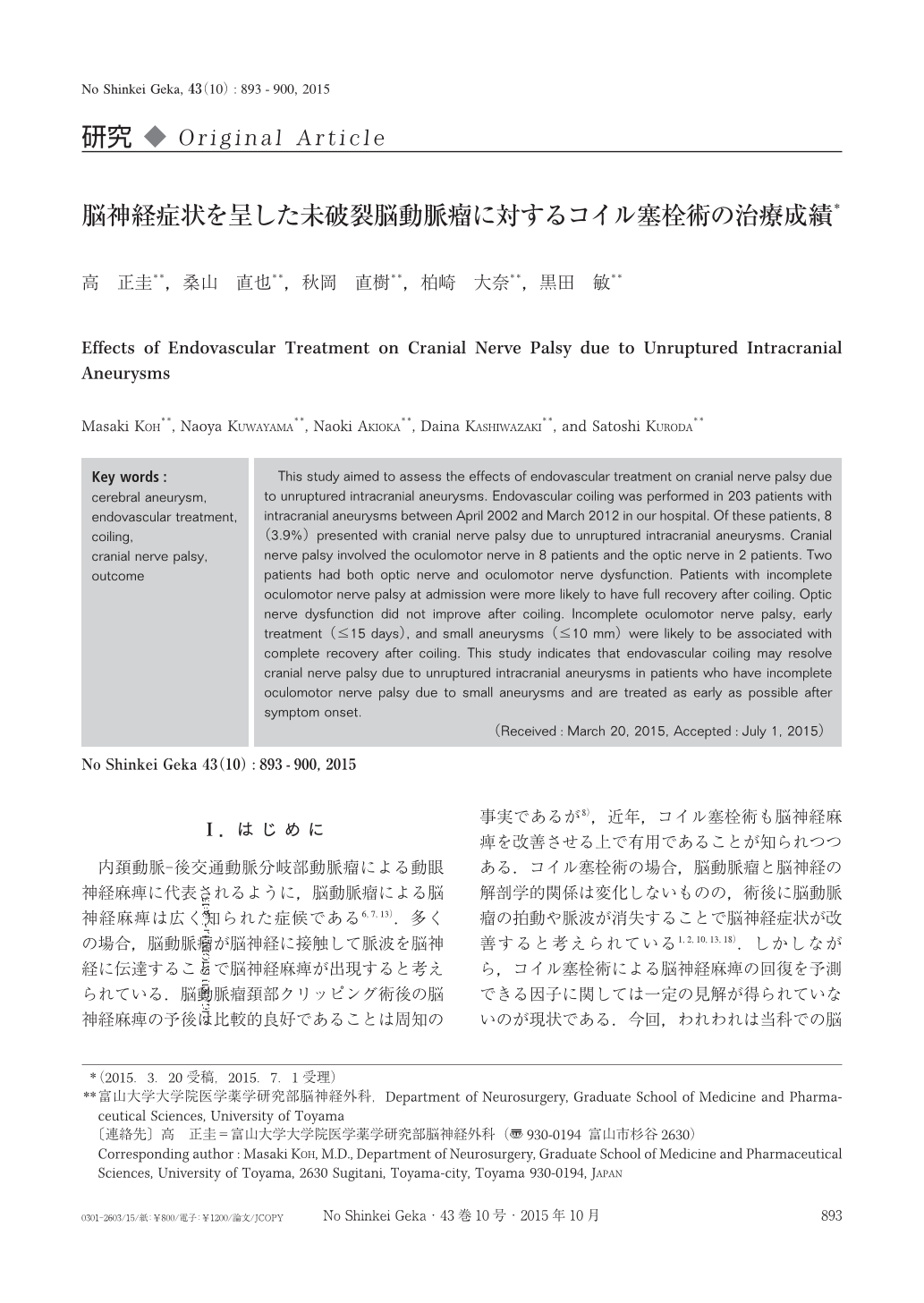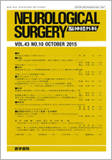Japanese
English
- 有料閲覧
- Abstract 文献概要
- 1ページ目 Look Inside
- 参考文献 Reference
Ⅰ.はじめに
内頚動脈-後交通動脈分岐部動脈瘤による動眼神経麻痺に代表されるように,脳動脈瘤による脳神経麻痺は広く知られた症候である6,7,13).多くの場合,脳動脈瘤が脳神経に接触して脈波を脳神経に伝達することで脳神経麻痺が出現すると考えられている.脳動脈瘤頚部クリッピング術後の脳神経麻痺の予後は比較的良好であることは周知の事実であるが8),近年,コイル塞栓術も脳神経麻痺を改善させる上で有用であることが知られつつある.コイル塞栓術の場合,脳動脈瘤と脳神経の解剖学的関係は変化しないものの,術後に脳動脈瘤の拍動や脈波が消失することで脳神経症状が改善すると考えられている1,2,10,13,18).しかしながら,コイル塞栓術による脳神経麻痺の回復を予測できる因子に関しては一定の見解が得られていないのが現状である.今回,われわれは当科での脳神経症状を呈した未破裂脳動脈瘤に対するコイル塞栓術の治療成績を検討したので,文献的考察を含めて報告する.
This study aimed to assess the effects of endovascular treatment on cranial nerve palsy due to unruptured intracranial aneurysms. Endovascular coiling was performed in 203 patients with intracranial aneurysms between April 2002 and March 2012 in our hospital. Of these patients, 8(3.9%)presented with cranial nerve palsy due to unruptured intracranial aneurysms. Cranial nerve palsy involved the oculomotor nerve in 8 patients and the optic nerve in 2 patients. Two patients had both optic nerve and oculomotor nerve dysfunction. Patients with incomplete oculomotor nerve palsy at admission were more likely to have full recovery after coiling. Optic nerve dysfunction did not improve after coiling. Incomplete oculomotor nerve palsy, early treatment(≤15 days), and small aneurysms(≤10 mm)were likely to be associated with complete recovery after coiling. This study indicates that endovascular coiling may resolve cranial nerve palsy due to unruptured intracranial aneurysms in patients who have incomplete oculomotor nerve palsy due to small aneurysms and are treated as early as possible after symptom onset.

Copyright © 2015, Igaku-Shoin Ltd. All rights reserved.


